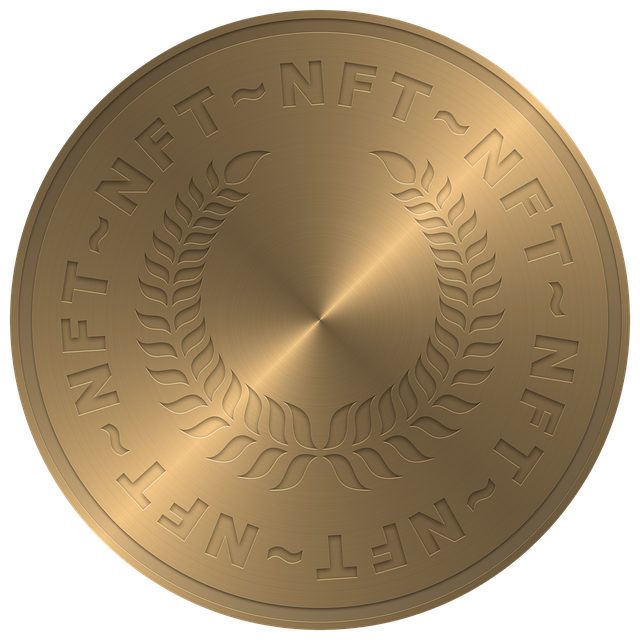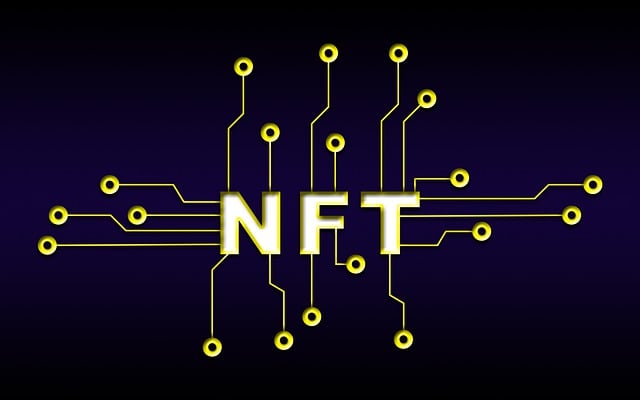2025 Best AI Crypto Trading Bot Free Guide
Author: Jameson Richman Expert
Published On: 2025-11-04
Prepared by Jameson Richman and our team of experts with over a decade of experience in cryptocurrency and digital asset analysis. Learn more about us.
best ai crypto trading bot free — If you’re looking for the most reliable, no-cost options in 2025 to automate crypto trading using AI or machine-learning techniques, this guide breaks down the best free tools, open-source frameworks, exchange-integrated bots, security checks, setup steps, and proven strategies. You’ll learn which platforms let you run intelligent bots for free, how to evaluate their AI capabilities, and practical steps to deploy a safe automated trading workflow.

Why this guide matters (and who it’s for)
Automated trading is no longer limited to institutional desks. Individual traders can now use AI-enhanced strategies to analyze hundreds of indicators, backtest ideas, and execute trades automatically. This article is designed for:
- Beginners wanting a safe, free entry to automated trading
- Technical traders who want open-source AI-ready toolkits
- Intermediate users who want to compare exchange-integrated bots versus self-hosted solutions
Quick overview: What counts as an “AI crypto trading bot”?
An “AI crypto trading bot” typically refers to automated software that uses machine learning (ML), natural language processing (NLP), pattern recognition, or adaptive algorithms to make trade decisions. Not every automated bot has AI — many use rule-based or technical indicator strategies — so it’s important to confirm the use of ML models, data-driven optimization, or adaptive parameter tuning when labeling something “AI.” For background on algorithmic trading basics, see Investopedia’s explanation of algorithmic trading.
Top free options in 2025: AI-ready and free to use
Below are the most practical and well-supported free options in 2025. I separate them into (A) exchange-native/hosted free bots with smart features and (B) open-source / DIY frameworks you can extend with AI/ML.
A. Exchange-integrated free bots (fast to start)
- Pionex (exchange bots) — Pionex provides a suite of built-in bots such as grid, DCA, and arbitrage bots that are free to use (fees come from spread/market). While not pure “AI” out-of-the-box, they provide parameter optimization and automated execution that many traders treat as AI-assisted automation. Pionex is suitable for beginners who want simple, robust automation without coding.
- KuCoin Trading Bot — KuCoin’s built-in bots (grid, DCA, futures grid) are free to deploy for account holders. These bots include configurable parameters and backtesting; advanced users can simulate ML strategies locally and then deploy with KuCoin API.
- Exchange bots via major exchanges — Several large exchanges provide bot marketplaces or built-in automated strategies. Creating an account (for example on Binance using this link) is usually required to use exchange-native bots: Register on Binance.
B. Open-source DIY frameworks (AI-ready, fully free)
For traders who want genuine AI/ML integration, open-source frameworks let you build and train models, then execute via exchange APIs. They require coding knowledge but are infinitely more flexible.
- Freqtrade — A popular Python-based open-source crypto trading bot that supports custom strategies and backtesting. You can integrate ML models (scikit-learn, TensorFlow, PyTorch) for signal generation. It’s free and supported by an active community. Official repo and docs are a must-read for setup.
- Superalgos — Visual, open-source trading intelligence platform with advanced analytics and workflow automation. It supports data pipelines, backtesting, and algorithmic strategies. It’s ideal if you want a GUI for designing data-driven strategies and incorporating ML tasks.
- Hummingbot — Focused on market-making and arbitrage but fully open-source. You can extend strategies with machine learning components and deploy on exchanges via API keys.
- Other frameworks — Tools like Catalyst (Zipline-based) or custom ML pipelines built with TensorFlow/PyTorch plus exchange connectors are common for advanced users.

How to decide between hosted free bots and open-source AI bots
Your choice depends on trade-offs between ease, control, cost, and true AI capability:
- Ease of use: Exchange-native bots (Pionex, KuCoin) are quickest with minimal setup.
- Control and flexibility: Open-source (Freqtrade, Superalgos) lets you code custom ML models and strategies.
- Security: Hosted bots keep funds within the exchange; DIY bots require careful API key management and potentially VPS security.
- Cost: Many exchange bots are free to deploy but include trading fees/spread. Open-source tools are free but may require compute or VPS costs.
Evaluating “AI” claims — what to look for
Many platforms market “AI trading” — but AI can mean anything from simple adaptive thresholds to full-fledged ML models. Ask the following:
- Does the platform open-source its models or publish validation/backtesting results?
- Can you access raw features and labels to retrain models?
- Does the bot use proven ML methods (supervised learning, reinforcement learning) or only heuristics?
- How does the model update? Real-time online learning, periodic retraining, or no model updates?
- Are backtests robust and include walk-forward analysis?
Practical example: Building a free AI bot with Freqtrade + Binance
This is a simplified, high-level workflow to show how a free AI-capable bot can be constructed and run safely.
- Create exchange account and API keys: Register on Binance: Binance registration. Enable 2FA and create API keys with trading-only permissions (disable withdrawals).
- Install Freqtrade: Deploy on a secure machine or VPS with Ubuntu. Freqtrade is free and documented; follow the official install guide.
- Collect historical data and features: Use Freqtrade to download OHLCV and additional indicators. Create features such as moving averages, RSI, order book features, and on-chain metrics if desired.
- Train ML model: Use scikit-learn or Keras to train a classifier/regressor on historical data (predict price direction, returns). Use cross-validation, and perform walk-forward testing to avoid look-ahead bias.
- Integrate model into strategy: Export model to a format your bot can use (pickle, ONNX). Implement the model evaluation in your Freqtrade strategy to generate buy/sell signals based on probability thresholds.
- Backtest thoroughly: Run backtests with transaction cost assumptions, slippage, and realistic timing. Evaluate Sharpe ratio, maximum drawdown, and win rate.
- Paper trade & monitor: Start paper trading on exchange or run on a small live balance. Monitor performance and logs.
Note on using other exchanges
If you prefer other exchanges, you can register via these links to connect them to your bot for trading:
- MEXC registration: Create MEXC account
- Bitget registration: Create Bitget account
- Bybit registration: Create Bybit account

Safety and security best practices
Security is essential when you run automated trading software:
- API key permissions: Use keys with trading-only permissions. Never enable withdraw API access for a bot.
- 2FA and account locks: Enable multi-factor authentication and withdrawal whitelist where available.
- Run on secure infrastructure: Use a reputable VPS or your local machine with OS updates and a firewall. Minimize exposed services.
- Monitor logs and alerts: Set up monitoring and notifications so you can respond to unexpected behavior quickly.
- Limit capital exposure: Start with small amounts and use position sizing and stop-loss rules.
Backtesting and model validation — critical steps
Backtesting is where many traders err. Robust testing should include:
- Out-of-sample testing: Reserve a test period that the model never saw during training.
- Walk-forward analysis: Re-train on rolling windows and test on the next period.
- Transaction costs & slippage: Include realistic trading fees and slippage assumptions to avoid over-optimistic performance.
- Stress testing: Simulate different market regimes (high volatility, low liquidity) to evaluate model robustness.
Common AI approaches used in crypto trading bots
Here are widely used ML methods and how they’re applied:
- Supervised learning: Predict price direction or returns using features derived from historical data.
- Reinforcement learning (RL): Learn trading policies through simulated interaction with market environments — powerful but complex and data-hungry.
- Time-series models: LSTM, GRU, and Transformers applied to price sequences for sequence prediction.
- Ensemble models: Combine multiple models (trees + neural nets) to improve stability and reduce overfitting.
- NLP for sentiment: Use social media and news sentiment analysis to add a predictive feature — careful: noisy data.

Pros and cons of free AI crypto trading bots
Pros
- Low or no upfront cost — you can start experimenting cheaply.
- Open-source tools enable transparency and customization.
- Exchange-native bots reduce setup overhead and security risk when funds stay on the exchange.
Cons
- “Free” platforms may limit features, API calls, or charge higher trading fees/spread.
- AI models can overfit historical data and fail in new regimes.
- DIY AI requires technical skills and maintenance.
Regulation and legal considerations
Automated crypto trading must comply with local laws and exchanges’ terms of service. In the U.S., regulatory bodies like the Securities and Exchange Commission (SEC) and the Commodity Futures Trading Commission (CFTC) issue guidance relevant to trading and marketing of algorithms. Always check regulations that apply to your jurisdiction. For consumer protection and fraud alerts, see the SEC’s investor alerts and bulletins.
Real-world examples and case studies
Here are short examples illustrating different approaches:
- Example 1 — Pionex grid bot (beginner): A trader allocates $1,000 to a Pionex grid bot across a volatile altcoin range. The bot buys low and sells high across a grid and rebalances automatically. Simple setup, low maintenance.
- Example 2 — Freqtrade ML strategy (intermediate): A developer trains a classifier on BTC 1-hour candles with technical features and integrates the model into Freqtrade. After backtesting and paper trading, they deploy with $500 and strict stop-loss logic. The AI model identifies short-term mean-reversion opportunities.
- Example 3 — Hummingbot market making (advanced): A market maker uses Hummingbot to provide liquidity on a low-volume token. They monitor inventory risk and adjust quoting logic; ML components optimize spread dynamically.

Where to find more guides and signal providers
For complementary resources on the best trading platforms and signal providers, read these detailed guides:
- Best crypto trading platforms in USA — 2025 expert guide — a review of platforms and regulatory considerations.
- Binance trading full course — free beginner-to-pro guide — helpful if you plan to use Binance with your bot.
- Who is the best crypto trading signal provider — 2025 guide — good for learning how to evaluate signal quality and integrate signals into bots.
Checklist: How to pick the best free AI crypto trading bot (summary)
Use this checklist before deploying capital:
- Does it support your exchange (API compatibility)?
- Is the “AI” claim transparent (model details/backtests)?
- Are API permissions restricted (no withdrawals)?
- Can you run a paper trade or sandbox test?
- Does it have monitoring, logging, and alerting?
- Are community/support and documentation adequate?
- Have you included transaction costs and slippage in backtests?
Further reading and trusted resources
To deepen your understanding of algorithmic trading and AI in finance, consult these authoritative sources:
- Algorithmic trading — Wikipedia
- Artificial intelligence — Wikipedia
- Investopedia on algorithmic trading
- SEC investor alerts and bulletins

Putting it all together: a recommended path for 2025
If you’re new to AI trading bots and want a safe, cost-effective path:
- Create accounts on reputable exchanges (for example, Binance via this link), or create accounts on MEXC, Bitget, or Bybit using the links above.
- Start with an exchange-native free bot (Pionex or KuCoin bots) to learn automation basics without coding.
- Progress to open-source tools (Freqtrade or Superalgos) to experiment with ML models using a small paper-trading budget.
- Adopt robust backtesting, walk-forward testing, and risk controls before scaling.
- Continuously monitor and retrain models as market regimes change.
Limitations and risks (be realistic)
Despite the promise of AI, no bot guarantees profits. Market microstructure, flash crashes, liquidity constraints, API failures, and model decay can all cause losses. Treat automated strategies like any investment: manage risk, avoid overleveraging, and stay updated on market and regulatory changes.
Conclusion
“best ai crypto trading bot free” options in 2025 range from exchange-integrated, easy-to-use bots to fully open-source frameworks you can extend with machine learning. For beginners, exchange bots let you rapidly start while minimizing security hassles. For technically skilled traders, frameworks like Freqtrade and Superalgos provide ultimate flexibility to build genuine AI-driven systems without license costs. Regardless of the path, prioritize robust backtesting, security (API permissions and 2FA), and risk management. For platform reviews and deeper guides, check the expert resources linked earlier including platform reviews and signal-provider guides on CryptoTradeSignals.
Ready to experiment? Open a trusted exchange account (Binance, MEXC, Bitget, Bybit) and begin with small, controlled tests while you learn and iterate.